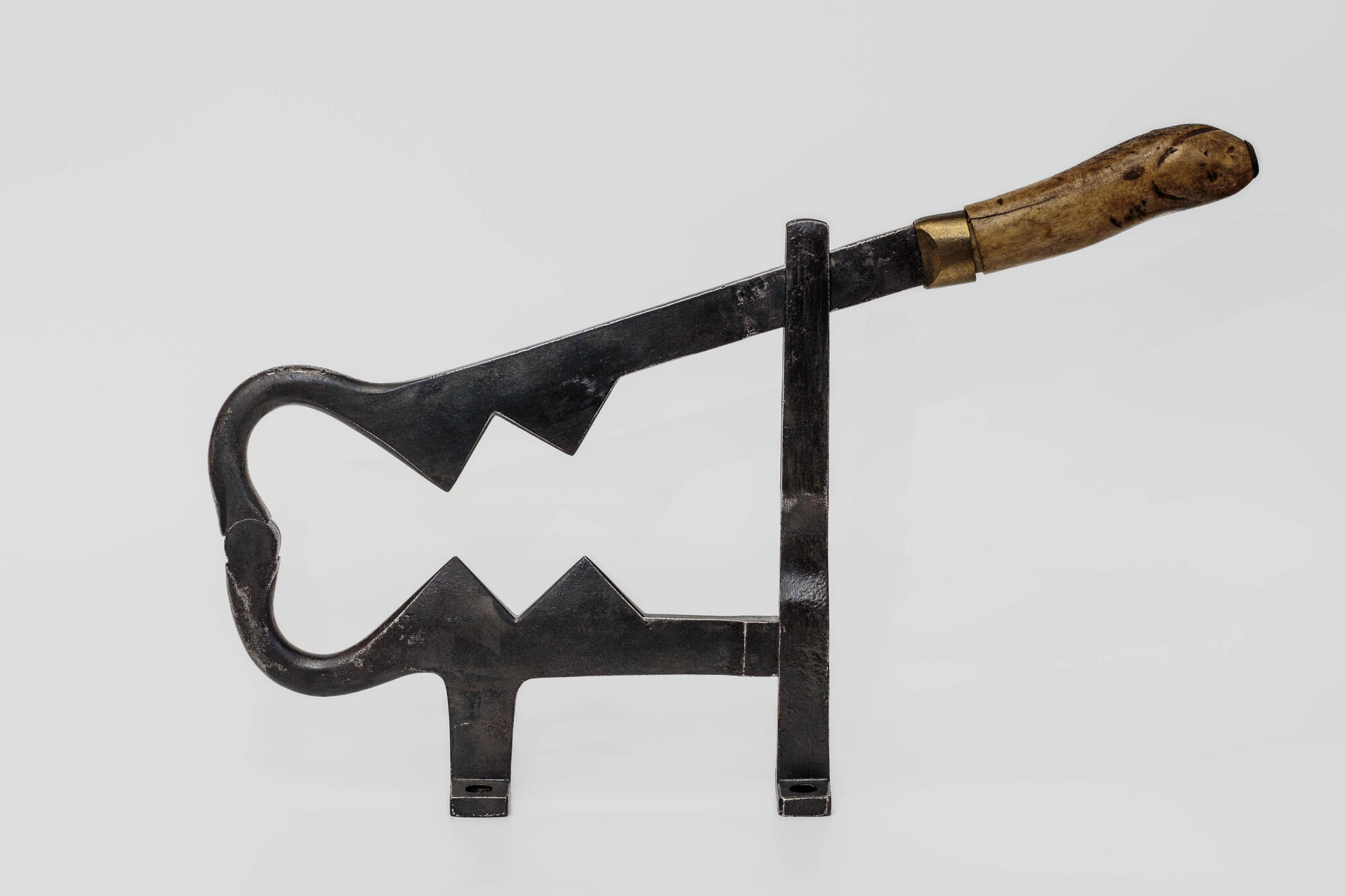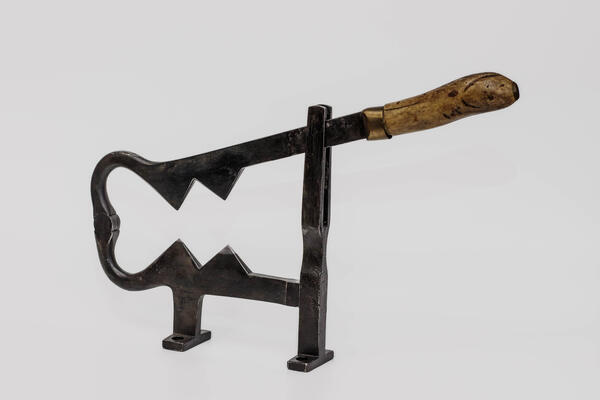This tool for cutting sugar loaves was made of metal and bone at a factory. It consists of two parts connected by a hinge. The lower — support — was secured onto a wooden surface with four nails or screws, for which there are round holes in its lower part. The upper part that moves up and down has an oblong bone handle. These sugar cutters, or sugar nips, are a tool for breaking large fragments of a sugar loaf into small pieces suitable for individual consumption or storing in a sugar bowl. First, large pieces were broken from the sugar loaf using a sugar hammer or a knife and a conventional hammer. Then, sugar cutters were used to make the pieces even smaller.
As customers wanted to avoid the physically hard work of splitting large sugar loaves, in the 1800s, stores began selling crushed sugar: a sugar loaf was split into pieces of irregular shape and size. The sugar loaf, which could be placed on a flat end, came in different sizes and weighed from 5 to 15 kilograms. For retail, large loaves were split into pieces.
A huge number of tools were invented and used for splitting sugar loaves — from pincers and hatchets to special guillotines. It is believed that the method of production of sugar cubes was invented by Jacob Christoph Rad, a scientist and entrepreneur of Swiss origin who lived in Dačice (present-day Czech Republic). In the early 1840s, he created the machine after his wife cut herself when chopping a sugar loaf.
Strong cutters are different from sugar tongs designed to take sugar from a sugar bowl. Sugar tongs (or “sugar and candy tongs”) are a teaware item, a tool for serving lump sugar. With some models of sugar pincers, one could both break off a piece and take it out of the sugar bowl. Sugar nips were a kitchen necessity from the 18th century until the last quarter of the 19th century.





